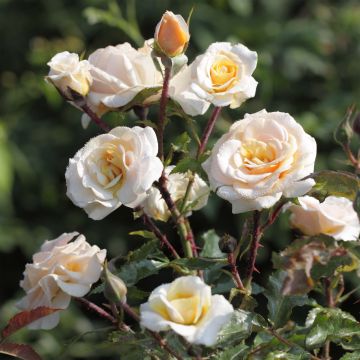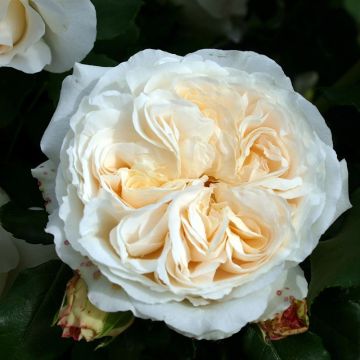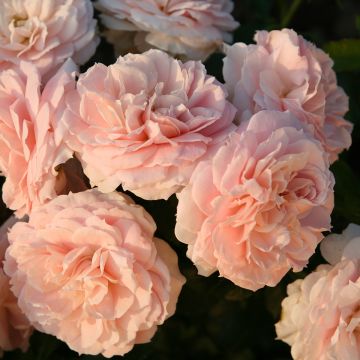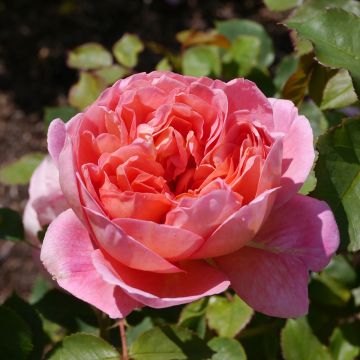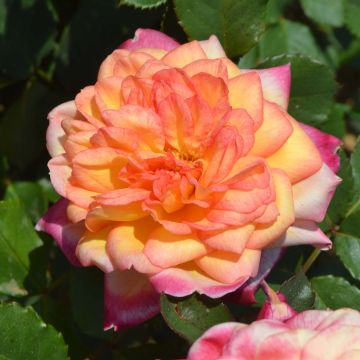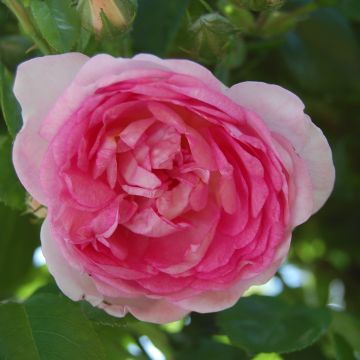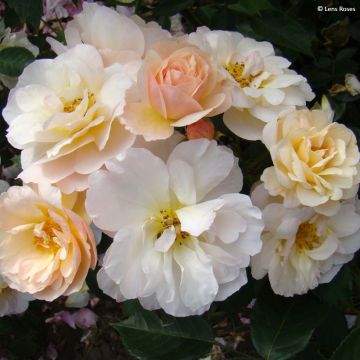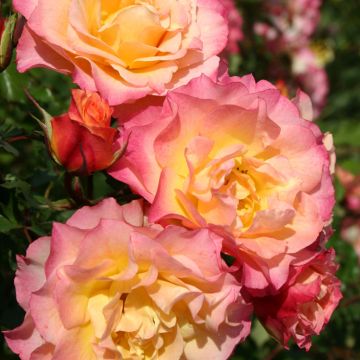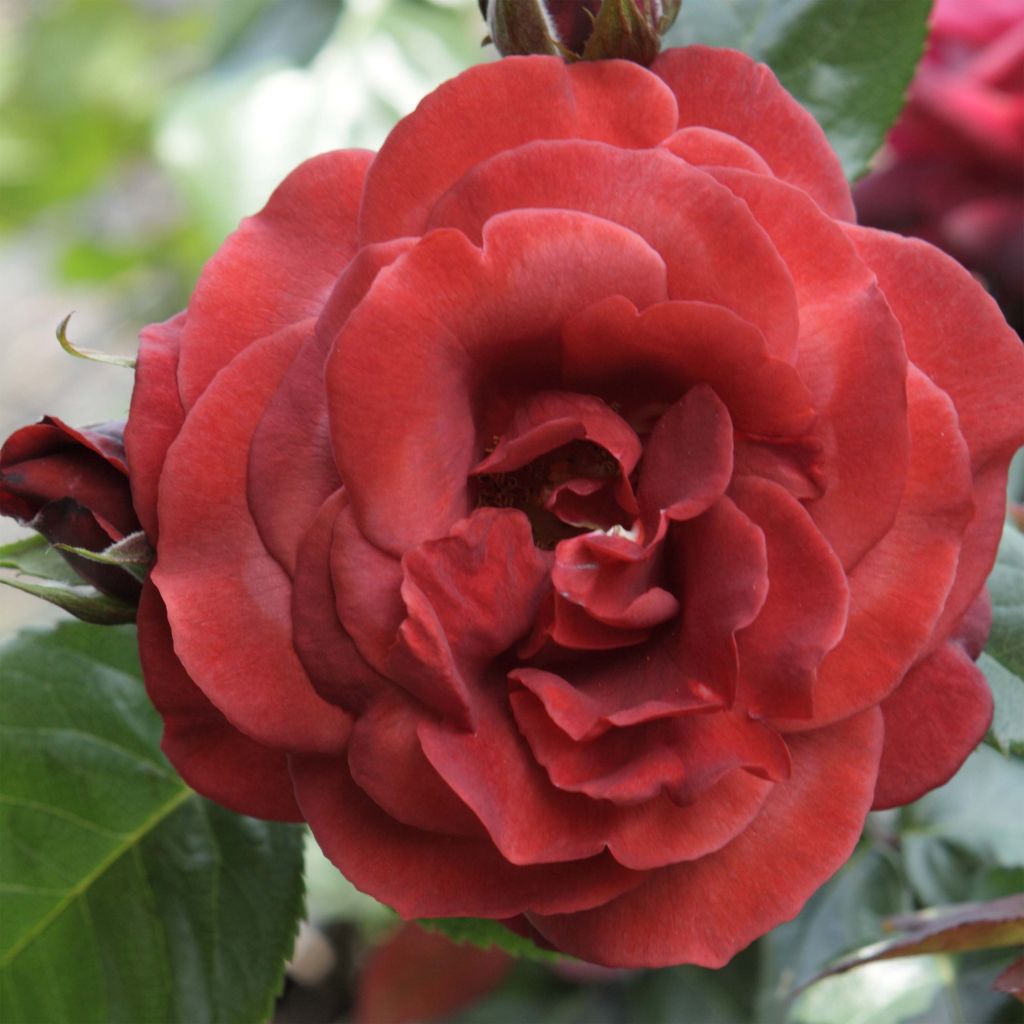

Rosa Terracotta Simchoca


Rosa Terracotta Simchoca
Rosa Terracotta Simchoca
Rosa Terracotta® 'Simchoca'
Modern Hybrid Rose
This item cannot be shipped to the selected country
Delivery charge from €5.90
Delivery charge from €5.90
Delivery to Corse prohibited
More information
Schedule delivery date,
and select date in basket
This plant carries a 24 months recovery warranty
More information
We guarantee the quality of our plants for a full growing cycle, and will replace at our expense any plant that fails to recover under normal climatic and planting conditions.
From €5.90 for pickup delivery and €6.90 for home delivery
Express home delivery from €8.90.
From €5.90 for pickup delivery and €6.90 for home delivery
Express home delivery from €8.90.
Delivery to Corse prohibited: UE law prohibits the import of this plant from mainland France to Corse as part of the fight against Xylella fastidiosa. Please accept our sincere apologies.
More information
Does this plant fit my garden?
Set up your Plantfit profile →
Description
The Terracotta Rose will undoubtedly seduce rose enthusiasts looking for subtle shades that stand out from the ordinary. Its large, modern-shaped, turbinate blooms display a surprising hue that is both red, ochre, and brown, subtle and very warm, known in graphic arts as 'burnt sienna'. It is enhanced by the silky texture of 30 well-arranged petals around a small pointed heart. This beautiful French horticultural creation is also quite resistant to diseases, allowing the very dense foliage to remain attractive until late in the season. The flowers, magnificent in the garden, are also lightly scented and very long-lasting in bouquets.
The 'Terracotta' Simchoca Rose, registered by the rose breeder Meilland in 2001, belongs to the modern hybrid tea roses with large flowers. It forms a small bushy shrub with a slightly upright, somewhat stiff habit, vigorous and fast-growing. It will reach approximately 1m (3 ft) in height with a spread of 70 cm (28 in). From May-June until very late in the season, on a dense matte dark green foliage, bloom beautiful modern roses, 11 cm (4 in) wide. They are solitary, carried by long, sturdy, and thorny stems. They are perfectly uniform, and their petals are edged in this exceptional red-brown color, unprecedented in the world of roses. Their fragrance, not very pronounced, is described as flowery. The foliage is quite resistant to diseases.
This modern Terracotta rose, with its unique personality, deserves to be showcased in the garden either as a solitary specimen, at the centre of a low perennial bed, or even in a large pot on the terrace. To accompany its red-brown flowers, one could choose other roses in old pink shades with a slightly faded air (Acropolis Rose or Botticelli Rose), soft oranges (Mrs Oakley Fisher, Martin des senteurs), or even mauves (Blue Boy Rose, Muriel Robin). Easy to cultivate, it adapts to all soils that are not too dry and to all climates. It pairs perfectly with pretty and easy-to-grow perennials such as perennial geraniums (Geranium Blue Cloud, Anne Folkard, Nimbus, Orion), bellflowers (lactiflora, rapunculoides), catmints, snapdragons, white foxgloves... Its flowers are perfect for creating very elegant and delicately scented bouquets.
Report an error about the product description
Rosa Terracotta Simchoca in pictures
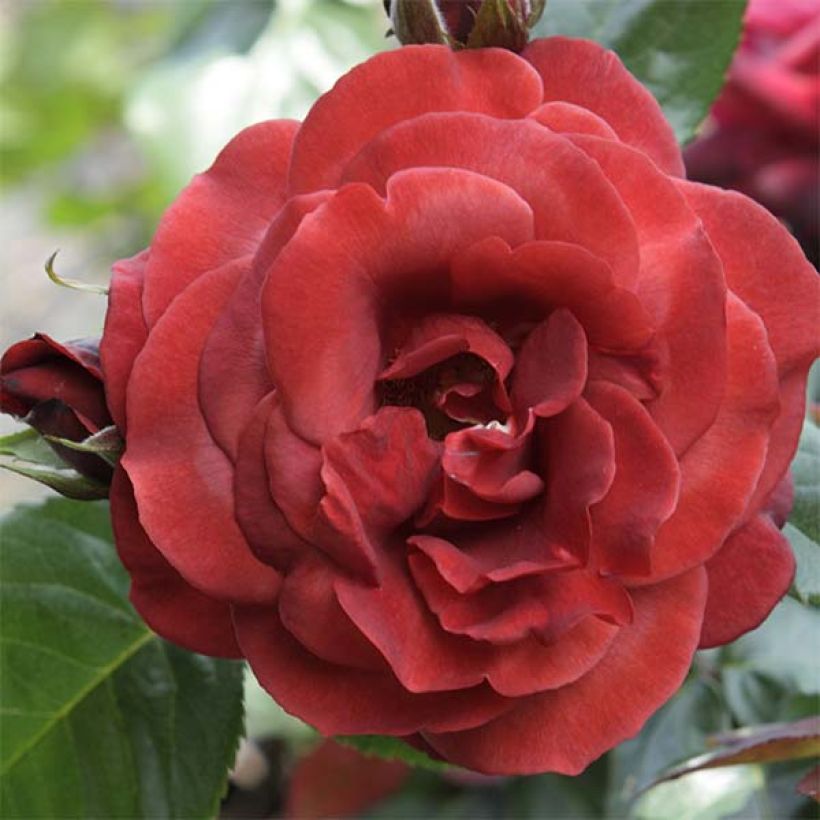

Plant habit
Flowering
Foliage
Botanical data
Rosa
Terracotta® 'Simchoca'
Rosaceae
Modern Hybrid Rose
Cultivar or hybrid
Rosa canina Laxa (4L/5L pot, Wrapped bare root)
Other Large-flower tea Roses
Planting and care
To install your potted rose, work the soil to a depth of 25 cm (10 in) by crumbling the soil and placing a base amendment such as dried blood or horn at the bottom of the planting hole. Position your plant, removed from its pot, and cover the top of the root ball with 3 cm (1.2 in) of soil. Fill in the hole and water generously to eliminate air pockets. During dry weather, it is necessary to water regularly for a few weeks to facilitate root growth. Remember to provide your rose with special rose fertiliser to stimulate flowering.
Roses are often blemished or unsightly at the end of summer, but it is not a problem for their development. These marks are a natural phenomenon and not harmful to the rose.
Planting period
Intended location
Care
-
, onOrder confirmed
Reply from on Promesse de fleurs
Roses by producer
Haven't found what you were looking for?
Hardiness is the lowest winter temperature a plant can endure without suffering serious damage or even dying. However, hardiness is affected by location (a sheltered area, such as a patio), protection (winter cover) and soil type (hardiness is improved by well-drained soil).

Photo Sharing Terms & Conditions
In order to encourage gardeners to interact and share their experiences, Promesse de fleurs offers various media enabling content to be uploaded onto its Site - in particular via the ‘Photo sharing’ module.
The User agrees to refrain from:
- Posting any content that is illegal, prejudicial, insulting, racist, inciteful to hatred, revisionist, contrary to public decency, that infringes on privacy or on the privacy rights of third parties, in particular the publicity rights of persons and goods, intellectual property rights, or the right to privacy.
- Submitting content on behalf of a third party;
- Impersonate the identity of a third party and/or publish any personal information about a third party;
In general, the User undertakes to refrain from any unethical behaviour.
All Content (in particular text, comments, files, images, photos, videos, creative works, etc.), which may be subject to property or intellectual property rights, image or other private rights, shall remain the property of the User, subject to the limited rights granted by the terms of the licence granted by Promesse de fleurs as stated below. Users are at liberty to publish or not to publish such Content on the Site, notably via the ‘Photo Sharing’ facility, and accept that this Content shall be made public and freely accessible, notably on the Internet.
Users further acknowledge, undertake to have ,and guarantee that they hold all necessary rights and permissions to publish such material on the Site, in particular with regard to the legislation in force pertaining to any privacy, property, intellectual property, image, or contractual rights, or rights of any other nature. By publishing such Content on the Site, Users acknowledge accepting full liability as publishers of the Content within the meaning of the law, and grant Promesse de fleurs, free of charge, an inclusive, worldwide licence for the said Content for the entire duration of its publication, including all reproduction, representation, up/downloading, displaying, performing, transmission, and storage rights.
Users also grant permission for their name to be linked to the Content and accept that this link may not always be made available.
By engaging in posting material, Users consent to their Content becoming automatically accessible on the Internet, in particular on other sites and/or blogs and/or web pages of the Promesse de fleurs site, including in particular social pages and the Promesse de fleurs catalogue.
Users may secure the removal of entrusted content free of charge by issuing a simple request via our contact form.
The flowering period indicated on our website applies to countries and regions located in USDA zone 8 (France, the United Kingdom, Ireland, the Netherlands, etc.)
It will vary according to where you live:
- In zones 9 to 10 (Italy, Spain, Greece, etc.), flowering will occur about 2 to 4 weeks earlier.
- In zones 6 to 7 (Germany, Poland, Slovenia, and lower mountainous regions), flowering will be delayed by 2 to 3 weeks.
- In zone 5 (Central Europe, Scandinavia), blooming will be delayed by 3 to 5 weeks.
In temperate climates, pruning of spring-flowering shrubs (forsythia, spireas, etc.) should be done just after flowering.
Pruning of summer-flowering shrubs (Indian Lilac, Perovskia, etc.) can be done in winter or spring.
In cold regions as well as with frost-sensitive plants, avoid pruning too early when severe frosts may still occur.
The planting period indicated on our website applies to countries and regions located in USDA zone 8 (France, United Kingdom, Ireland, Netherlands).
It will vary according to where you live:
- In Mediterranean zones (Marseille, Madrid, Milan, etc.), autumn and winter are the best planting periods.
- In continental zones (Strasbourg, Munich, Vienna, etc.), delay planting by 2 to 3 weeks in spring and bring it forward by 2 to 4 weeks in autumn.
- In mountainous regions (the Alps, Pyrenees, Carpathians, etc.), it is best to plant in late spring (May-June) or late summer (August-September).
The harvesting period indicated on our website applies to countries and regions in USDA zone 8 (France, England, Ireland, the Netherlands).
In colder areas (Scandinavia, Poland, Austria...) fruit and vegetable harvests are likely to be delayed by 3-4 weeks.
In warmer areas (Italy, Spain, Greece, etc.), harvesting will probably take place earlier, depending on weather conditions.
The sowing periods indicated on our website apply to countries and regions within USDA Zone 8 (France, UK, Ireland, Netherlands).
In colder areas (Scandinavia, Poland, Austria...), delay any outdoor sowing by 3-4 weeks, or sow under glass.
In warmer climes (Italy, Spain, Greece, etc.), bring outdoor sowing forward by a few weeks.


































